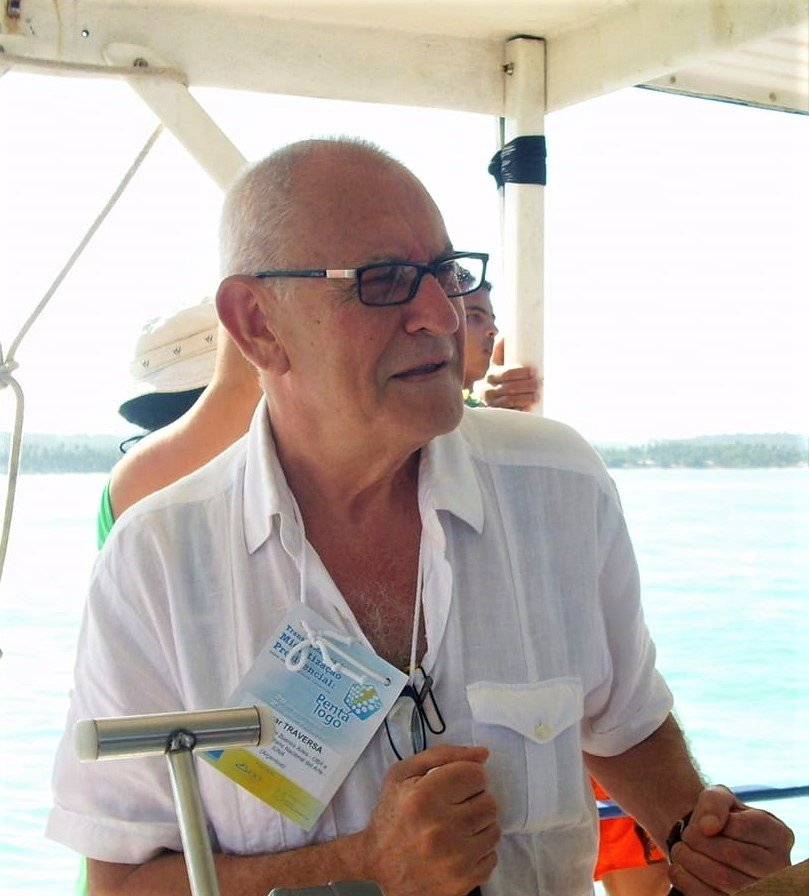Oscar Traversa (1940-2020)

Tuvo una buena vida. Lo creemos. Oscar reafirmó sus elecciones, sus acciones atendiendo siempre a sus proyectos y a los de los otros.
Antes del comienzo del último congreso mundial de semiótica en Buenos Aires -2019-, recordaba los inicios de la asociación (grupo, agrupamiento…) en 1970 mientras trabajaba entusiasta en la organización del encuentro. Hasta ese momento la AAS (Asociación Argentina de Semiótica) había tenido una vida siempre intensa, pero extrainstitucional. Oscar no abandonó ni por un instante el objetivo de afianzar esa existencia. Se daba así un nuevo paso en el desarrollo histórico de los estudios semióticos, que lejanamente, habían tenido instancias fundacionales en momentos como los de la revista LENGUAjes.
Y también viene a la memoria una tarde de 2002 cuando en su casa, mientras ponía en marcha una nueva unidad académica, la de Crítica de Artes en la Universidad Nacional de la Artes -por entonces todavía Instituto-, nos embarcaba en el proyecto de diseño de una carrera a distancia: lo empujaba la urgencia política de ampliar ese territorio del conocimiento.
Nos quedan sus escritos y con sus escritos, las búsquedas y las inquietudes y también las incertezas que nos arriman a la reflexión y a la investigación. Nos quedan las novedosas regulaciones de los dispositivos y las utopías golpeadas, hoy, en las pantallas. Bailan desde las páginas de sus primeros o últimos artículos, Carmen y Salomé.
Y nos quedan también sus perspectivas de gestión: las instituciones se hacen con todos, con presencias y ausencias; con la fuerza siempre cambiante de la diversidad.
Marita Soto y Oscar Steimberg
Oscar Traversa (1940-2020)
He had a good life. We do believe that. Oscar’s actions and choices were always made taking in consideration not only his own projects, but also (and specially) those of his family, friends and co-workers.
Before the beginning of the last World Congress of Semiotics in Buenos Aires -2019-, while working enthusiastically in the organization, he remembered the beginnings of the Argentine Association of Semiotics in 1970. Until that moment the AAS had always had an intense, but extra-institutional life. Oscar did not abandon for a moment the objective of reinforcing the association. Thus, a new step was taken in the historical development of semiotic studies, which in the past had had foundational moments such as those of the magazine LENGUAjes.
And it also comes to mind one afternoon in 2002. While he was setting up a new academic unit, that of Art Criticism at the National University of the Arts -at that time still an Institute-, he embarked us on the project of designing a distance learning career. He was driven by the political urgency of expanding that territory of knowledge.
We are left with his writings, and within his writings with the searches, the questions and also the uncertainties that fuel even further the reflection and the research. We are left with his ideas about the dipositif regulations and the utopias hit, today, on the screens. Carmen and Salome dance from the pages of their first or last articles.
And we are also left with his take on management perspectives: institutions are made of everyone; with the ever-changing strength of diversity.
Marita Soto y Oscar Steimberg

Leave a Reply